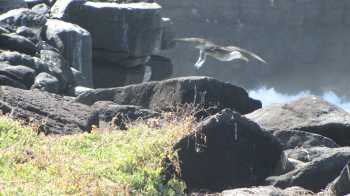The 2012 update by BirdLife International to the IUCN Red List of Threatened Species for birds has now been released (click here).
A quick analysis of the 30 species of ACAP-listed albatrosses, petrels and shearwaters reveals that 22 species (73%) are categorized as threatened. With six species being classified as Near Threatened, only two species (the two giant petrels Macronectes spp.) are considered to be of Least Concern. Seventeen (77%) of the 22 species of listed albatrosses remain threatened, of which eight are categorized as Critically Endangered or Endangered, the rest as Vulnerable.
The Critically Endangered (at imminent risk of extinction) ACAP species are the Amsterdam Diomedea amsterdamensis, Tristan D. dabbenena and Waved Phoebastria irrorata Albatrosses and the newly listed Balearic Shearwater Puffinus mauretanicus. These four species all have small populations or breed at single sites or at a few sites only and most have populations that are decreasing in size.

Over the edge? The Waved Albatross remains Critically Endangered
Photograph by John Cooper
One piece of good news among the gloom is that the Black-footed Albatross P. nigripes has been down-listed from its 2010 category of Endangered. "This species has been downlisted to Vulnerable because the model used to project a future population decline because of incidental mortality in longline fisheries has been criticised and it is implied that the rate of decline has been overestimated. Nevertheless, the species is expected to decline rapidly over a period of three generations (2009-2065) owing primarily to mortality caused by longline fishing fleets, assuming that overall mitigation measures are inadequate." Click here to read more on the down-listing.
The Endangered status of the Northern Royal Albatross D. sanfordi remains under review by BirdLife International (click here); all the other listed species have not had their category of threat changed in the last two years.
For background information visit the 2012 BirdLife Fact Sheets for all 30 ACAP-listed species and also the ACAP Species Assessments.
John Cooper, ACAP Information Officer, 10 June 2010e

 English
English  Français
Français  Español
Español